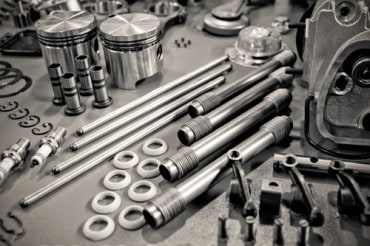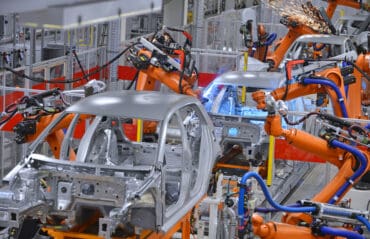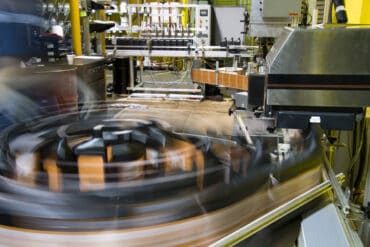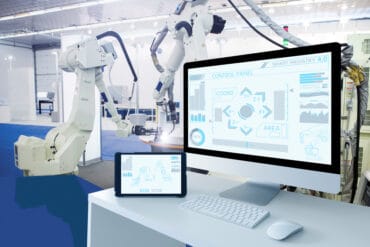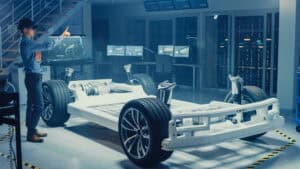
From prototyping and design to workforce training and sustainable production, augmented reality is making an impact on the way vehicles are developed and brought to market.
The electric vehicle (EV) market is booming, driven by demand for sustainable transport options and exciting innovations from both established automakers and agile startups. Amidst this rapid growth, manufacturers are increasingly adopting augmented reality (AR) to meet the challenges of shorter development cycles, consumer-driven designs, and sustainable production. Here’s how AR is helping EV manufacturers stay ahead of the curve.
1. Accelerating the Prototyping Process with Augmented Reality
Traditionally, prototyping has been a costly and time-consuming stage in vehicle development, often requiring multiple physical models and extensive trial and error. AR is disrupting this process by enabling engineers to create and test virtual prototypes before building physical ones. Through immersive visualizations, teams can virtually assess design aspects like fit, function, and aesthetics, streamlining modifications and significantly shortening development cycles.
This reduction in prototyping time is a game-changer for EV manufacturers, where innovation is critical and timelines are tight. With AR, teams can quickly test battery placement, optimize aerodynamics, or validate weight distribution in ways that were once resource-intensive. This capability speeds up time-to-market while ensuring high standards for performance and safety are met early in the design phase.
Back in 2020, BMW began using AR for this purpose at a Munich pilot plant. They needed fewer test setups and could verify earlier than before. All told, AR saved them up to a year of time on vehicle validation. As EVs continue to manage regulations, fluctuating demand, and evolving tech, that kind of time could prove crucial.
See also: From Best Practices to Zero Waste: Transforming EV Manufacturing Sustainability
2. Bringing the Consumer into the Design Process
One of the key shifts in EV manufacturing is the emphasis on consumer-centric design. EV buyers today expect not just efficiency but also vehicles that reflect their lifestyle choices, from customizable interiors to cutting-edge tech features. AR offers manufacturers a way to directly engage consumers in the design process, offering a virtual showroom experience that enhances the customization journey.
For example, consumers can interact with 3D models of their chosen vehicle, experimenting with different features and configurations in real time. They can visualize color schemes and interior layouts or even test virtual drive experiences, allowing them to provide instant feedback. This interactive approach is invaluable for manufacturers, as it enables them to gather real-time data on consumer preferences, enhancing the ability to create vehicles that maximize driving pleasure, safety, and personalization.
3. Streamlining Workforce Training and Maintenance
AR-assisted training is one frontier seeing a lot of adoption. By removing humans from dangerous scenarios while still allowing them to interact with those same scenarios, companies can increase safety while still offering practical training. In one example from Volvo, augmented reality is allowing first responders to assess damage on EV vehicles and proceed with caution.
As EV manufacturing incorporates more advanced machinery, the demand for well-trained operators and technicians has increased. Augmented reality is proving to be a powerful training tool, allowing less experienced employees to adapt to complex tasks quickly. With AR headsets or mobile devices, employees can access step-by-step guides or live assistance while they work, making training more engaging and practical.
This AR-enabled training and maintenance support translates to fewer errors on the production line and contributes to higher accuracy and quality assurance. For manufacturers, this streamlined workforce training ensures smoother operations, quicker onboarding of new staff, and reduced downtime, all of which are crucial for staying competitive in the fast-evolving EV landscape.
4. Supporting Sustainability Goals Through Precision
Sustainability is a core focus for most EV manufacturers, as they seek to minimize waste, optimize energy usage, and responsibly source materials. AR contributes to these efforts by helping manufacturers visualize materials and production requirements before any physical resources are used. Engineers can see a digital overlay of material quantities needed, allowing for adjustments that minimize excess or wastage.
This precision helps cut down on production line waste, as unnecessary resources are identified and removed from the equation early on. For example, augmented reality can highlight where material redundancies occur or offer alternatives that reduce energy-intensive processes. In this way, AR isn’t just a design tool but also a critical component in sustainable manufacturing practices, supporting manufacturers’ goals for an end-to-end green production process.
The Future of Augmented Reality in EV Manufacturing
As AR technology continues to evolve, its role in EV manufacturing is set to expand. From prototyping and design to workforce training and sustainable production, AR is making a tangible impact on the way vehicles are developed and brought to market. Both traditional automakers and EV-focused startups stand to gain, leveraging AR to streamline their operations and meet the demands of a rapidly changing automotive landscape.
With AR, EV manufacturers are not only keeping pace with the market but are also setting new standards in how vehicles are envisioned, created, and delivered to consumers. As the industry continues to grow, AR will likely remain a cornerstone of innovation, helping manufacturers design the next generation of electric vehicles that are both cutting-edge and aligned with consumer values.



